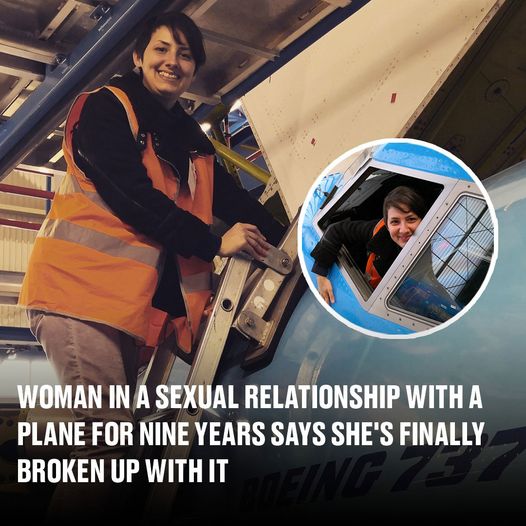For nearly a decade, a German woman named Michele Kobke maintained a sexual relationship with a Boeing 737-800 plane, which she affectionately named “Schatz,” meaning darling in German. The relationship, which started in 2014, was part of a phenomenon known as objectophilia, where individuals develop romantic or sexual attachments to inanimate objects.1
How It All Began

Kobke first encountered Schatz at Berlin Tegel Airport and was immediately captivated by the plane’s wings, winglets, and thrusters. Her feelings for the aircraft grew so intense that she dreamed of marrying it. “I sleep with my darling every night… intimacy is part of our relationship,” Kobke said during the relationship. For years, she cherished her bond with the plane, keeping various components of it as keepsakes.
The Breakup

However, after nearly nine years, Kobke recently announced that her relationship with the plane had ended. Despite the breakup, she explained that they remain on good terms: “We’re still friends,” she confirmed. The end of this unique relationship marked a new chapter in Kobke’s life, as she moved on to new interests.
Understanding Objectophilia

Kobke’s relationship with the plane is part of a broader phenomenon called objectophilia, where individuals develop deep emotional, romantic, or sexual connections with objects. Unlike fetishes, which are primarily about physical attraction to objects, objectophilia involves strong emotional bonds similar to those found in human relationships.2
The Complexity of Objectophilia

Objectophilia is often linked to other conditions such as synesthesia and autism. Some researchers believe that the attachment objectophiles feel may stem from heightened emotional or sensory responses to objects. For many, objects offer comfort and consistency, particularly for those with social difficulties or sensitivities, as is often the case with individuals on the autism spectrum.
Read More: Why You Should Reach for Ginger Ale Next Time You’re on a Flight
Kobke’s New Interests

Since the breakup, Kobke has shifted her focus from aviation to the Middle Ages, even adopting a new passion for collecting knight’s armor. “I now love wearing knight’s armor,” she said, explaining her new interest in medieval history and artifacts. She sold off many of her plane souvenirs to make room for her new collection, indicating a significant life change.
A Closer Look at Objectophilia in Society

While objectophilia may seem unusual, it is not as rare as one might think. High-profile cases like Erika Eiffel, who famously married the Eiffel Tower, and Eija-Riitta Eklöf, who wed the Berlin Wall, have brought more attention to this unique form of attraction. As our understanding of human psychology grows, objectophilia is becoming more recognized as a legitimate sexual orientation rather than a mere curiosity.
An Unconventional Love Story

Michele Kobke’s relationship with Schatz may have come to an end, but her story highlights the complexities of objectophilia and how it transcends societal norms. As Kobke moves on to new passions, her past relationship with the plane continues to fascinate and challenge our understanding of love and attachment in all its forms.
